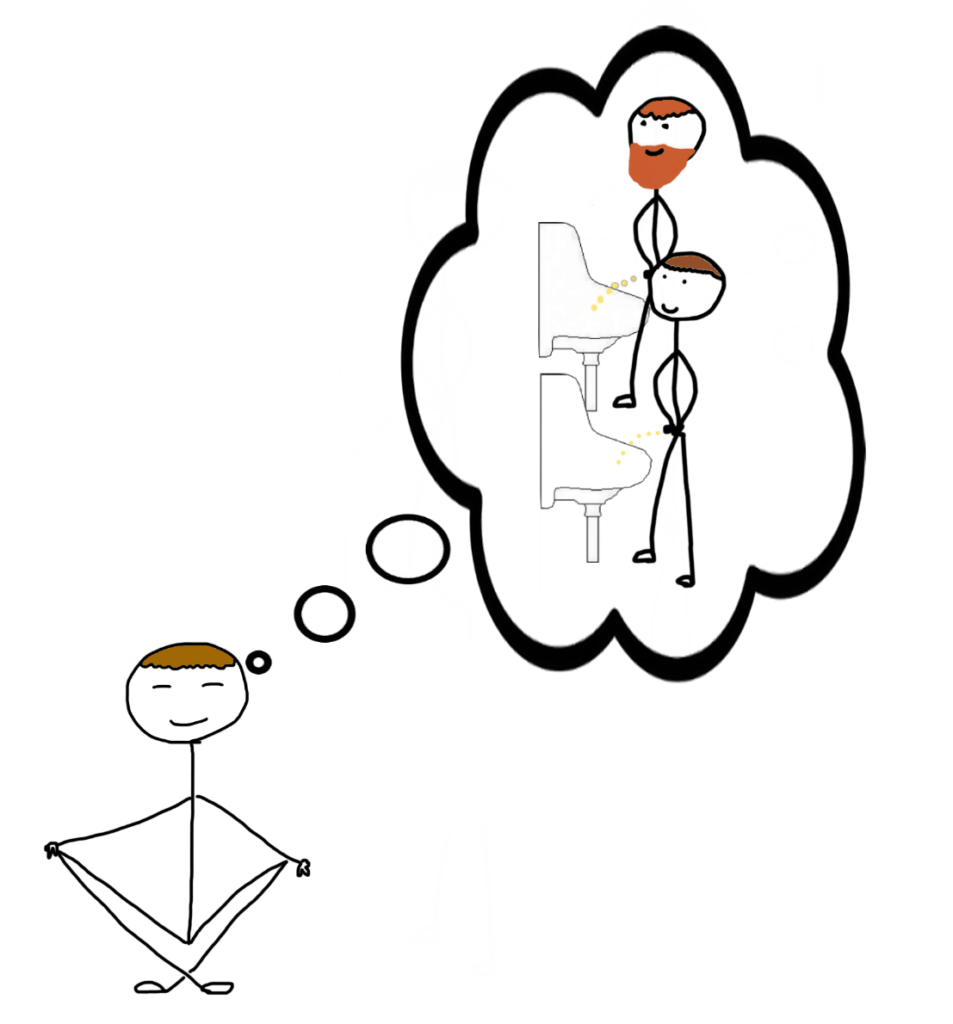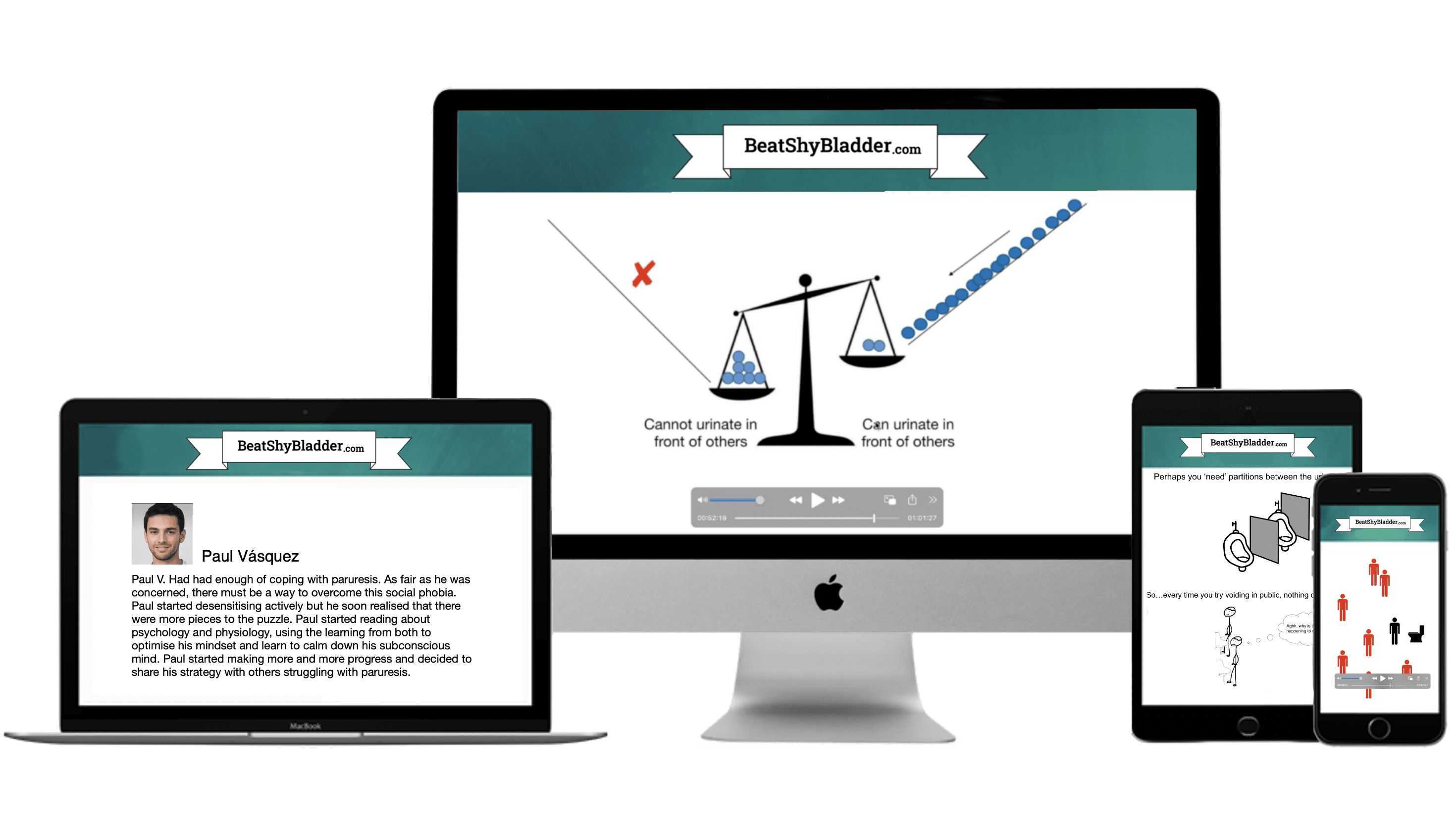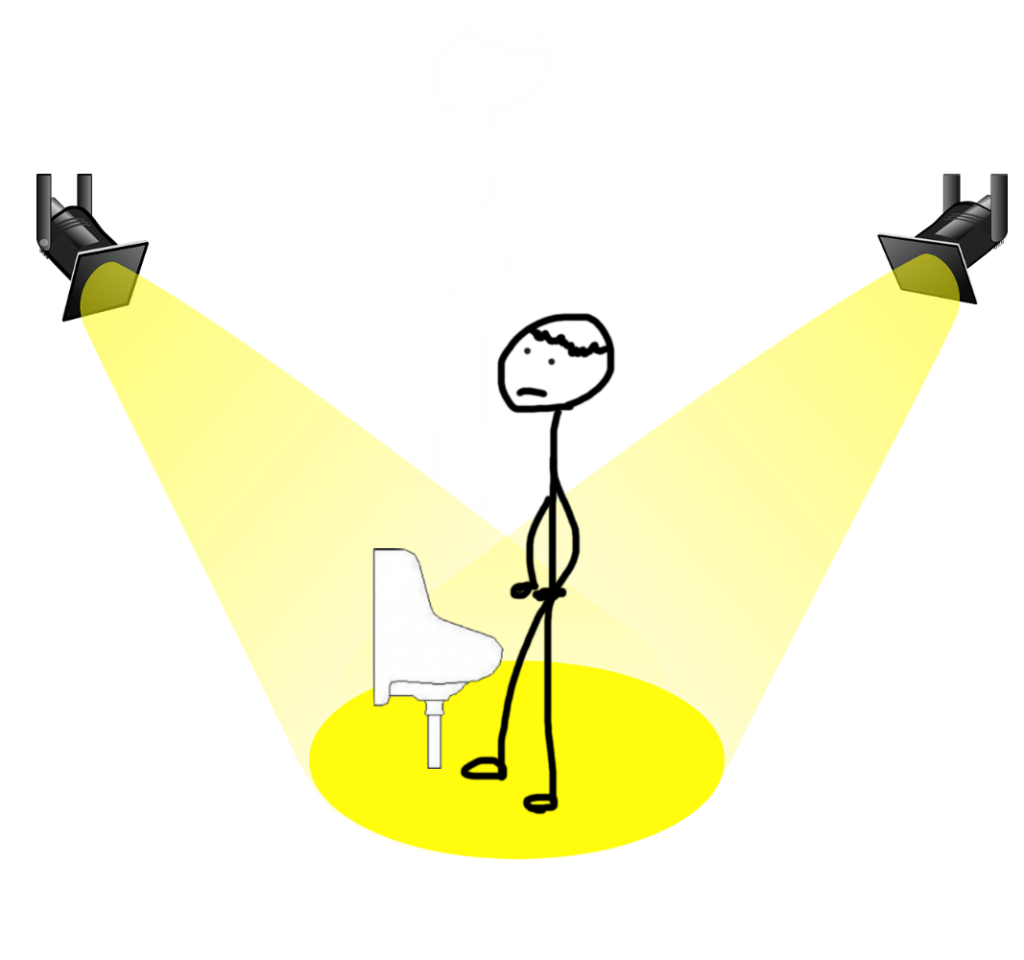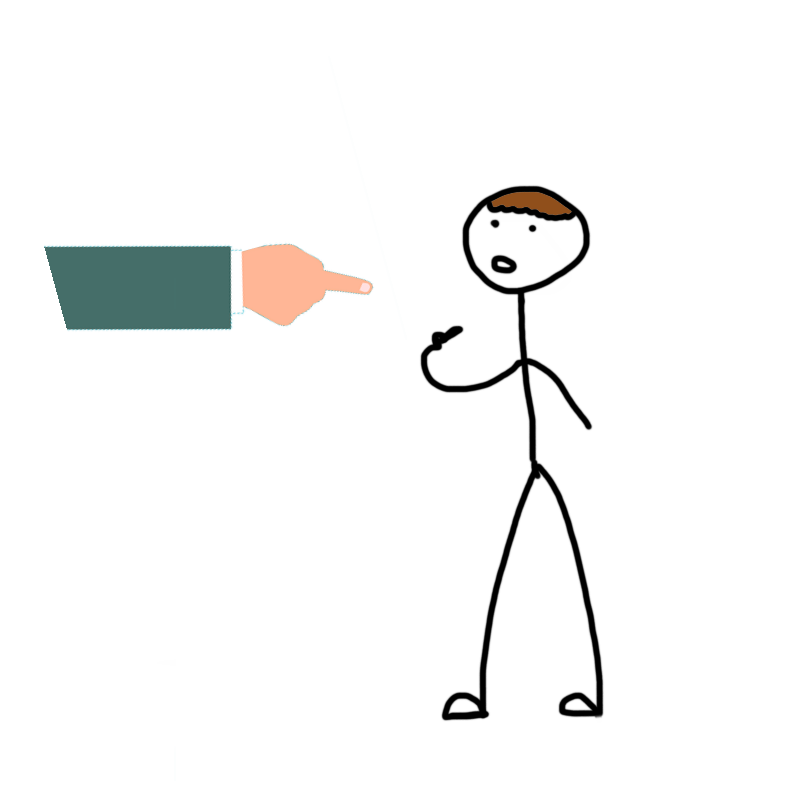What is NLP?
Neuro-linguistic Programming is a set of action-oriented techniques created by Richard Bandler and John Grinder in the 1970s. Since then, NLP has been used in clinical settings to help with: healing trauma, developing better habits, treating phobias etc.1
That means NLP can be used to help you with shy bladder syndrome!
These techniques aim to help you manage emotional responses to situations as well as help improve your communication with others.
But but but….I don’t care about communicating with others! I just want to use public restrooms!!!!!!
Okay, let’s get to how NLP can be used to help you navigate paruresis.
Like with CBT (check out the ultimate guide to CBT for shy bladder syndrome), neuro-linguistic programming studies the ways our thoughts affect our behavior. The goal here, being to change your mindset (and subsequently, your behavioural patterns and life).

Neuro: Your thinking processes. How you use your senses to understand what’s going on around you.
Linguistic: Your words. How the language you use influences your behaviour and those around you.
Programming: The mental code that dictates our behaviour in response to a stimulus. We can change and alter our programming.
Don’t just brush these techniques off as woo-woo nonsense. You can start using these today!
NLP Techniques for Shy Bladder Syndrome
Mental Imagery

Mental imagery is a bit like watching a movie.
Except you use your imagination and you’re fully in control of what happens in the movie.
Imagery training, also know an mental rehearsals or visualisation is an exercise where you create a highly detailed scene of yourself performing an action successfully.
It could be visualising yourself scoring a 3 pointer in a basketball game or it could be seeing yourself voiding comfortably in a crowded restroom.
By picturing yourself voiding successfully in a crowded restroom that would typically trigger your paruresis response, you are triggering the neuronal pathway that will help you achieve this outcome in the physical world.
The key is to picture a highly detailed scene full of colour, sounds (and even smell?).
Picture yourself with confident body language and a consciously arouse a sense of confidence and indifference while you visualise the desired outcome.
Doing this repeatedly, these mental rehearsals can start to influence your behavioural patterns in ‘real’ life.
Meaning Assignment
We all experience the world subjectively.
In essence, when an event takes place in our lives, we interpret that event based on our mental programming.
The meaning you assign to an experience is everything. The exact same event could produce two different experiences based on the meaning assigned.
For instance, take a ‘misfire’ (this is when paruresis kicks in) as an event. Two different people might interpret and therefore experience two widely different experiences.
Sally might feel frustrated, annoyed and even angry. She labels the misfire as ‘a nightmare’ and ‘frustrating’ and ‘a failure’.
On the pother hand, Rebecca might label the experience as a ‘lesson’. Her misfire has highlighted her lack of confidence in public restrooms and is now motivated to practice graduated exposure every day. Furthermore, by experiencing as misfire, Rebecca congratulates herself for not having engaged in her coping mechanisms (otherwise known as avoidance behaviour.)
Ultimately, the words and meaning we assign to an experience, become the experience. Therefore, you might want be careful about how you interpret an experience. It is good practice to keep a growth mindset and look for the the lesson in what might otherwise be a ‘negative’ experience.
Meta Positioning
Meta Positioning is the practice of viewing your current situation (including your thoughts, feelings and behaviour) from a third person perspective.
Imagine stepping outside of your body, going up 100ft in a helicopter and stopping to look back at yourself.

Often times, we are so caught up in our own emotions that is clouds and often exacerbates the severity of the situation we find ourselves in. Meta Positioning can help us become less emotionally reactive to a situation and help us become less attached to our position on a certain topic.
Another related technique is to have an imaginary conversation with the 90 year-old version of ourselves. Often times, deep inside we know what is best for ourselves and having an imaginary conversation about your current problems with the version of yourself that is almost at the end of life can add perspective about what is truly important.
Affirmations
Say the words as you change your physiology into a state of total confidence.
Repeat after me, ‘I am a smart and good looking and rich and successful and blah blah blah’
Affirmations are a controversial topic. Its clear that if you just monotonically say good things about yourself in front of the mirror, it doesn’t automatically make these thing become true.
When it comes to overcoming shy bladder syndrome, confidence comes from competence. But the inverse is true too – competence comes from confidence.
If affirmations are used correctly, by generating and associating the right feelings and emotions to the meaning of the words being spoken, then there is value in affirmations.
Affirmations is not a passive activity. Passively saying empty words is unlikely to produce significant results.
Modelling
The idea behind modelling is that we can drastically increase our chances of achieving our desired goals by seeking out those who have already achieved what we are currently trying to achieve and then model their behaviour.
Hope you found this post useful and have a great day!
Overcome Shy Bladder Syndrome Today
Get your hands on the time tested Beat Shy Bladder Blueprint
- Self Auditing
- Protocol Reviews
- Knowledge Trove
- Feedback Loops
- Heart Rate Variability
- Visualisation
- Mindset Upgrade
- Desensitisation





Great read! I appreciate the thorough analysis presented. The examples really helped to clarify complex concepts. Does anyone else have additional insights or experiences to share on this topic?